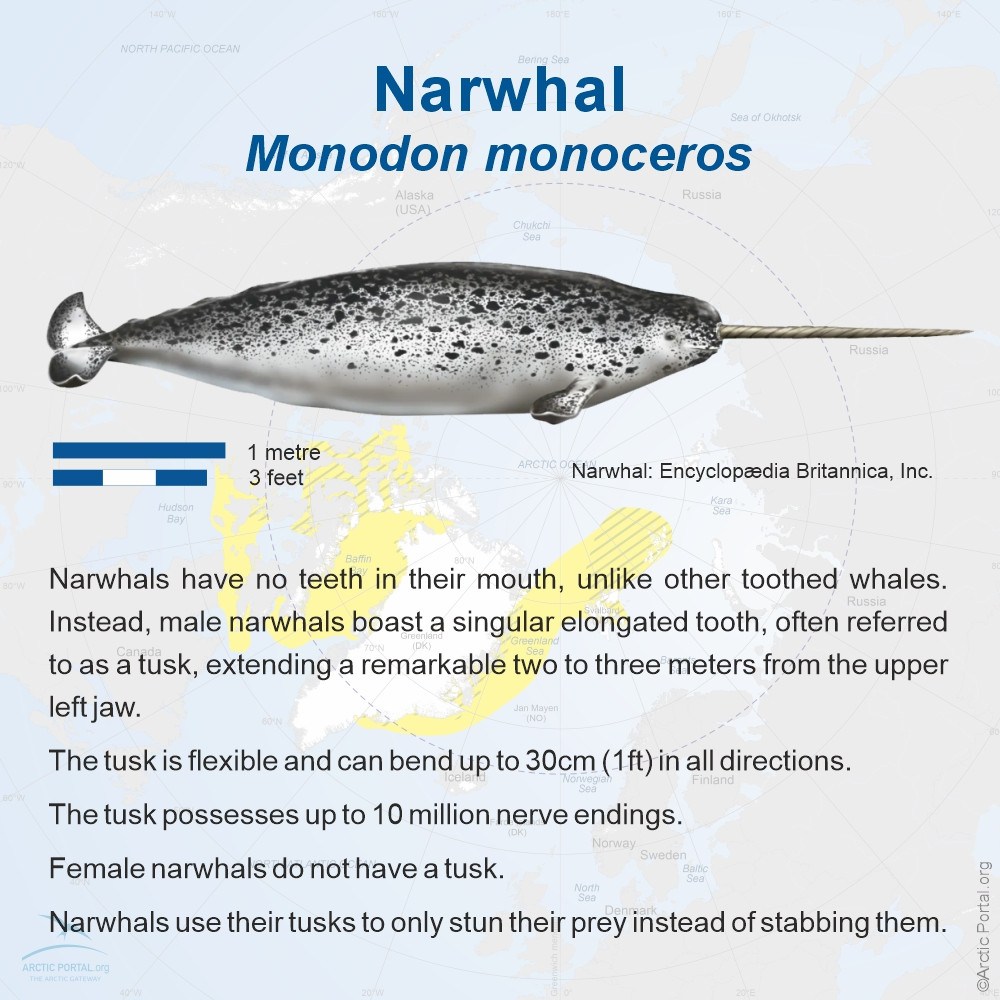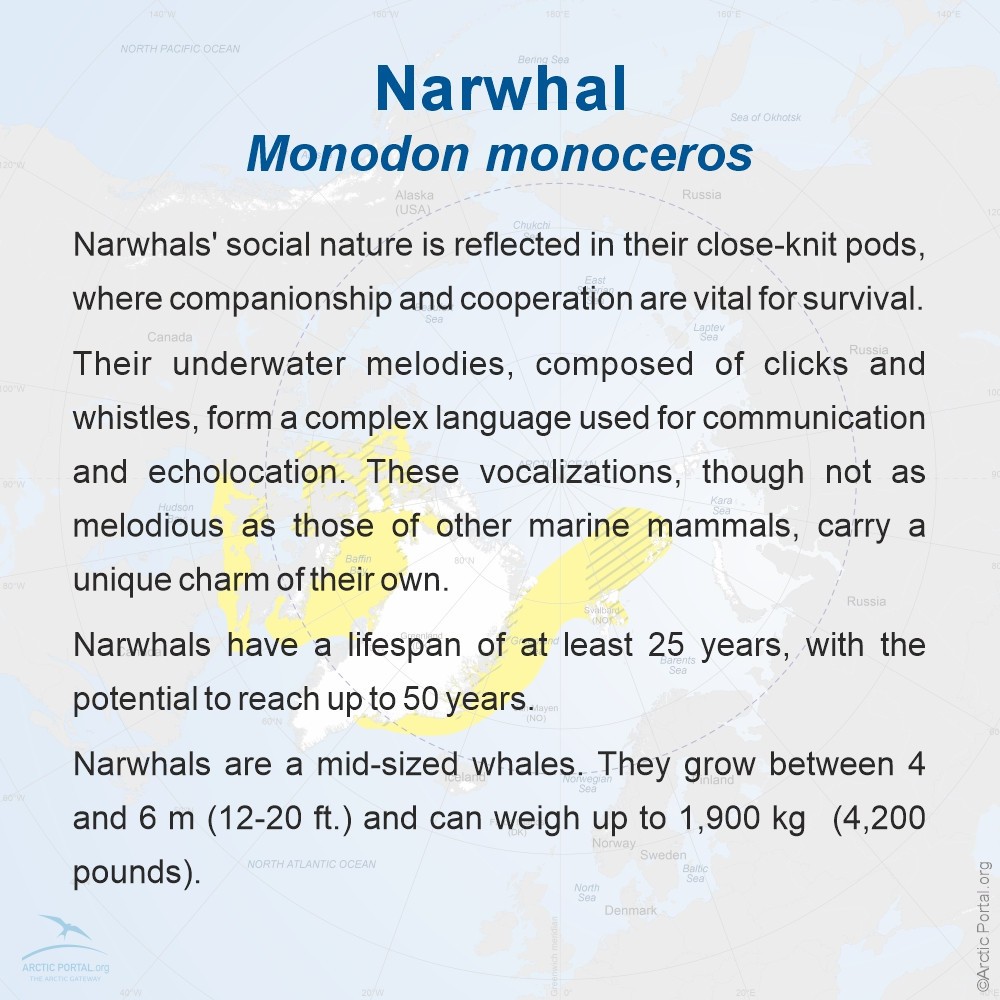Narwhals have no teeth in their mouth, unlike toothed whales. Instead, male narwhals boast a singular elongated tooth, often referred to as a tusk, extending a remarkable two to three meters from the upper left jaw.
Narwhals have no teeth in their mouth, unlike toothed whales. Instead, male narwhals boast a singular elongated tooth, often referred to as a tusk, extending a remarkable two to three meters from the upper left jaw.
The tusk is flexible and can bend up to 30 cm (1 ft) in all directions.
Female narwhals do not have a tusk.
Narwhals use their tusks to only stun their prey instead of stabbing them.
Narwhals are enigmatic cetaceans that inspire awe with their long, spiraled tusks that evoke the image of mythical unicorns.
Their distinct single tusk is an elongated tooth that can extend up to ten feet. This remarkable tusk serves various purposes: a sensory organ to navigate through icy channels, a tool to break through ice, and a means of communication through clicks and echoes that pierce the underwater silence.
Their diet primarily consists of fish, squid, and other marine delicacies that thrive in these chilly waters. Their streamlined bodies and powerful tails enable them to glide through their icy realm.
Narwhals' social nature is reflected in their close-knot pods, where companionship and cooperation are vital for survival.
Their underwater melodies, composed of clicks and whistles, form a complex language used for communication and echolocation. The vocalizations, through not as melodious as those of other marine mammals, carry a unique charm of their own.
Narwhals have a lifespan of at least 25 years, with the potential to reach up to 50 years.
Narwhals are mid-sized whales. They grow between 4 and 6 m (12-20 ft) and can weigh up to 1,900 kg (4,200 pounds).
See also our map on Narwhal Whale Distribution and Movement
Visit our Map Gallery Arctic Portal specializes in creating customized graphical maps that cover a range of significant Arctic topics with global recognition. We are continuously working on new maps and adding them to our Gallery.










